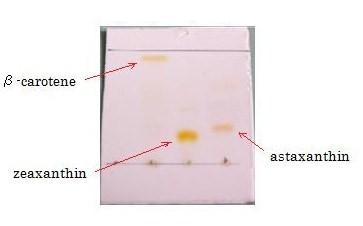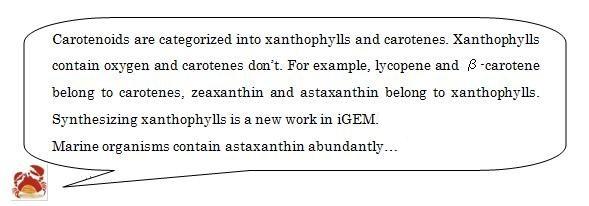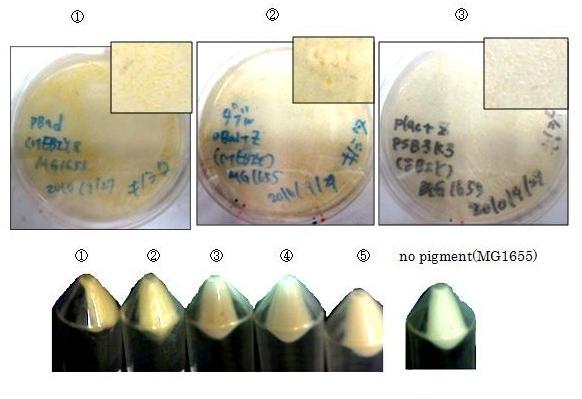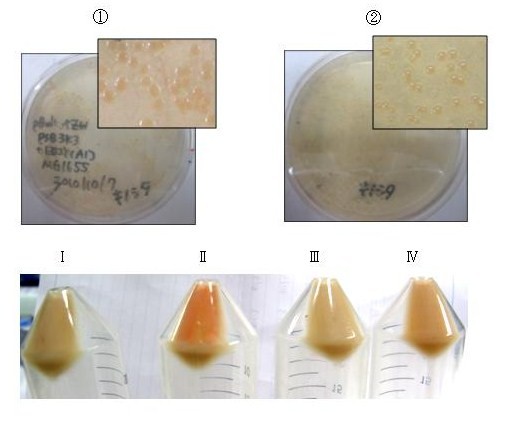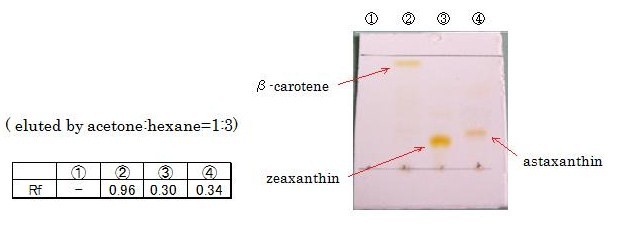Team:Tokyo Tech/Project/Apple Reporter
From 2010.igem.org
2-1 Color
Contents |
Abstract
Our team synthesized β-carotene, zeaxanthin and astaxanthin under several conditions (strain, construct,…etc) to confirm the functions. Particularly, astaxanthin is the final metabolite of the carotenoid synthetic pathway.
We synthesized β-carotene and zeaxanthin by assembling crtEBIY and crtZ of existing BioBrick parts. Though the part crtZ has been unconfirmed, we confirmed it for the first time in iGEM.
In addition, we succeeded in synthesizing astaxanthin by introducing the new BioBrick part crtW. Therefore, the carotenoid synthetic pathway reached the end.
After comparing the functions, we performed Thin Layer Chromatography (TLC) to confirm the products of β-carotene, zeaxanthin, astaxanthin were synthesized.
~carotenoid synthetic pathway~
Introduction
Carotenoids are natural organic pigments in plants and bacteria. Synthetic carotenoid pigments colored yellow, red or orange represent about 15-25% of the cost of production of commercial feed. Carotenoids are terpenoid based on a structure having the chemical formula C40H56. There are about 600 carotenoids, which perform a range of functions. For example, light energy absorption, protection against photo-damage, acting as antioxidants, and as precursor to other organic compounds such as vitamin A. However, astaxanthin is not converted to vitamin A in the human body. Too much vitamin A is toxic for a human, but astaxanthin has lower toxicity.
Previous year, our team has completed melanin synthetic pathway. Since the carotenoid synthetic pathway is huge, BioBrick Registry doesn’t cover all parts to complete the pathway. This year, we introduced a new BioBrick part to synthesize more various kinds of carotenoids. And we succeeded in synthesizing astaxanthin, one of the final metabolite of the pathway.
Furthermore, when the synthetic pathway is completed, it becomes able to change the color gradually by controlling the production of several carotenoids.
Results
β-carotene synthesis
→more information about β-carotene
Our team synthesized β-carotene under several conditions to confirm the activity of BioBrick parts designed by Cambredge 2009. (See more...)
zeaxanthin synthesis
→more information about zeaxanthin
Our team synthesized zeaxanthin by several kinds of construct to confirm the activity of BioBrick parts designed by Cambredge 2009 and Edinburgh 2007. By assembling the crtZ, crtEBIY and appropriate promoters, we constructed new BioBrick parts to synthesize zeaxanthin and compared their function . (→BBa_K395701, BBa_K395702, BBa_K395704)
We constructed two types of zeaxanthin synthetic construct. (See more...)
From the result, we decided to use pBad/araC promoter and double plasmids construct in "astaxanthin synthesis".
astaxanthin synthesis
→more information about astaxanthin
Our team synthesized astaxanthin to make the pathway reach the end by assembling crtW and zeaxanthin synthesis constructs. (→BBa_K395706) After constructing new BioBrick parts to synthesize astaxanthin we compared their function. (See more...)
~acetone extract and vacuum concentration~ →protocol
We also examine the production controlled by activity of pBad/araC promoter.→click
Separation of carotenoids with TLC
We performed thin layer chromatography (TLC) to confirm the products of β-carotene, zeaxanthin, astaxanthin were synthesized. (See more...)
Reference
 "
"

